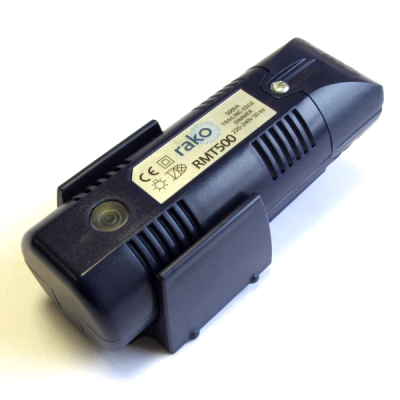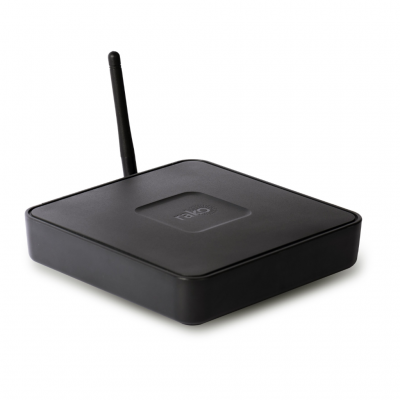The importance of energy-efficient lighting in residential design cannot be overstated. With growing concerns about climate change and increasing energy costs, homeowners are looking for ways to reduce their carbon footprint and lower their energy bills. One of the most effective ways to achieve this is by implementing energy-saving lighting solutions in UK residential design. The impact of lighting on energy consumption and a property’s overall carbon footprint is substantial, and thus, exploring various energy-efficient lighting options is essential.
Understanding Energy-Efficient Lighting
Energy-efficient lighting refers to lighting technology that consumes less energy than traditional lighting solutions while still providing adequate light output. The importance of energy-efficient lighting lies in its ability to reduce energy consumption without negatively impacting the functionality or aesthetics of a space.
LED (Light Emitting Diode) lighting plays a significant role in energy-efficient lighting, owing to its low energy consumption and long lifespan. LED lights also emit less heat and are more environmentally friendly than traditional incandescent, halogen, or fluorescent lighting options.
Wattage refers to the amount of energy a light bulb consumes, while lumens measure the brightness of the light emitted. It is crucial to consider both when selecting energy-efficient lighting solutions. For example, a higher lumen output with a lower wattage indicates a more energy-efficient bulb.
Energy-Efficient Lighting Solutions
LED lighting has emerged as a popular energy-saving solution, owing to its numerous benefits. In addition to its energy efficiency, LED bulbs have a longer lifespan than traditional bulbs, resulting in fewer replacements and reduced waste. Moreover, LED lighting offers better-quality light, instant brightness and can be used with dimmers, making them suitable for various residential applications.
Smart lighting systems offer homeowners energy-saving benefits, along with convenience and customisation options. These systems can be controlled via smartphones, tablets, or voice commands, allowing users to adjust brightness levels, change colour temperatures, and set schedules, all of which contribute to energy savings.
Incorporating motion sensors into a residential lighting design can lead to significant energy savings. These sensors detect movement, automatically turning lights on when needed and off when rooms are unoccupied.
Geo-fencing technology can contribute to energy efficiency by using a homeowner’s smartphone location to control lighting. When a user leaves their home, the smart lighting system can automatically turn off lights, ensuring energy savings.
Dimmers allow homeowners to adjust lighting intensity, providing energy-saving benefits. By reducing the brightness of LED lights, energy consumption is lowered, resulting in reduced energy costs.
Timed lights can be set to turn on and off at specific times, ensuring that lights are not left on unnecessarily and that energy consumption is reduced.
Types of Energy-Efficient Lighting
Various types of energy-efficient lighting solutions are available for residential use, including LED, fluorescent, incandescent and halogen lamps.
LED lights offer the highest energy efficiency, with low energy consumption and long lifespans. Fluorescent lamps are also energy-efficient compared to incandescent and halogen lamps. However, they typically contain mercury, posing environmental concerns during disposal.
Incandescent and halogen lamps are less energy-efficient, with shorter lifespans and higher energy consumption. As such, they are being phased out in favour of more energy-efficient alternatives.
The energy consumption and efficiency of each lighting type directly impact a property’s overall energy consumption and carbon footprint. With LED being the most energy-efficient option, it is the preferred choice when striving for significant energy savings in residential design.
Implementing Energy-Efficient Lighting in Residential Design
When selecting energy-efficient lighting solutions, consider factors such as wattage, lumens, colour temperature, and compatibility with control systems. Also, take into account the particular requirements of each room, as well as any architectural or design constraints.
The Role of Lighting Design in Energy Efficiency: A well-planned lighting design can contribute to energy efficiency by ensuring that light is effectively distributed, reducing the need for additional fixtures. Incorporating energy-saving controls, such as dimmers, motion sensors and smart lighting systems, can further enhance a property’s energy efficiency.
Successful Implementation of Energy-Efficient Lighting in UK Residential Design: As UK homeowners become increasingly eco-conscious, successful examples of energy-efficient lighting in residential design abound. For instance, The Greenwich Peninsula’s Passivhaus development in London showcases an array of energy-saving solutions, including LED lighting, smart controls and daylight sensors, demonstrating the effectiveness of energy-efficient lighting in modern home design.
The Future of Energy-Efficient Lighting in Residential Design
Emerging Trends in Energy-Efficient Lighting: The advancement of energy-efficient lighting technology promises continued innovation and the development of increasingly efficient solutions. As a result, the future of residential design will likely see further integration of smart lighting systems, enhanced control options, and more versatile lighting solutions.
The Role of Technology in the Future of Energy-Efficient Lighting: Technological advancements, such as the continued development of LEDs, will play a crucial part in the future of energy-efficient lighting. Additionally, the internet of things (IoT) and artificial intelligence (AI) will likely impact the ease of control and adaptability of lighting solutions, leading to improved energy efficiency.
The Impact of Energy-Efficient Lighting on the Future of Residential Design: As energy efficiency becomes ever more crucial, the adoption of energy-saving lighting solutions will have far-reaching consequences on residential design. Architects and designers will need to consider energy-efficient lighting as a fundamental aspect of their work, ensuring that the environmental impact and energy consumption of the homes they design are minimised.
The significance and benefits of energy-efficient lighting in residential design are undeniable. As we move towards a more sustainable and eco-friendly future, it is imperative to continue exploring and implementing various energy-saving lighting solutions. By embracing the innovations and technologies that offer us increased energy efficiency, we can make a positive impact on the environment and create more comfortable, energy-efficient homes for years to come.

Enhancing Residential Design with Lighting Controls
Mood Lighting: Setting the Ambience
Mood lighting is an excellent way to personalise and enhance a living space by creating a specific atmosphere. Implementing energy-efficient lighting controls, such as dimmers, colour temperature adjustments, and scene setting using smart devices, allows homeowners to set the tone within their homes. These controls cater to different moods, activities, and occasions, transforming a space to suit the user's needs and desires.
Light Dimming: A Key Feature for Energy Efficiency and Comfort
Dimming is an essential feature in energy-efficient residential lighting, as it allows homeowners to adjust the intensity of the light according to their preferences and requirements. This not only results in energy savings, as lower-intensity lighting consumes less power, but also provides a comfortable and adaptable living environment. Many smart lighting systems can integrate with dimmer switches to provide this functionality, offering an advanced yet easy-to-use control interface.
Lighting Automation: Convenience and Efficiency
Lighting automation is another crucial aspect of energy-efficient residential lighting design. Automating the lighting allows homeowners to pre-program lighting schedules, ensuring that lights are only switched on when needed. For example, automating exterior lights to turn on at dusk and to turn off at dawn ensures adequate illumination of the property during hours of darkness, without unnecessary energy waste. Moreover, automation can include occupancy sensors, daylight harvesting, and integration with other home automation systems, all of which contribute to enhanced energy efficiency.
Lighting App Control: The Power of Smart Devices
The rise of smart devices, such as smartphones and tablets, has revolutionised the way we interact with lighting controls. Through dedicated lighting control apps, homeowners can adjust various lighting settings, including brightness, colour temperature, and scene selection, all from the convenience of their device. These apps enable quick and easy adjustments to lighting conditions, resulting in improved compatibility with the user's lifestyle and preferences.
In addition to convenience, lighting app control enhances energy efficiency by granting homeowners the ability to monitor and optimise their lighting use remotely. For example, users can check whether lights are left switched on when they are away from home, and then turn them off remotely to save energy. Moreover, some apps provide energy consumption data, offering insights into which lighting settings and fixtures can be adjusted for increased efficiency.
In conclusion, the use of lighting controls, such as mood lighting, dimming, automation, and app control, elevates the energy efficiency and customisation of a residential lighting design. By adopting these controls, homeowners can create a flexible, comfortable, and energy-efficient living environment that suits their unique preferences and lifestyles, while contributing to a more sustainable future.

FAQs
How do LED lights contribute to energy efficiency in residential design?
LED lights consume significantly less energy compared to traditional lighting solutions like incandescent and halogen bulbs. Additionally, LEDs have a longer lifespan, reducing the need for frequent replacements, and they emit less heat, making them a more environmentally friendly choice. These factors make LED lighting an ideal option for a more energy-efficient home.
How do smart lighting systems help reduce energy consumption in a home?
Smart lighting systems offer homeowners the ability to control and monitor their lighting settings remotely through smartphones, tablets, and voice commands. This remote control enables users to adjust brightness, change colour temperature, and set schedules for their lights, all of which contribute to energy savings. Moreover, many smart lighting systems integrate with other home automation devices to further optimise energy consumption.
What are the benefits of implementing motion sensors in residential design?
The use of motion sensors can significantly enhance a property’s energy efficiency by ensuring that lights are only on when needed. These sensors detect movement, automatically turning lights on when someone enters a room and off when the room is empty. This feature helps to minimise energy wastage, resulting in reduced energy consumption and costs.
What factors should be considered when selecting energy-efficient lighting for a home?
When choosing energy-efficient lighting solutions for a home, it is essential to consider factors such as wattage, lumens, colour temperature, and compatibility with control systems. Assessing the specific lighting requirements of each room and considering any architectural or design constraints is also crucial in determining the most suitable energy-efficient lighting options for your home.
How do lighting controls like dimmers and app-based controls contribute to energy efficiency?
Lighting controls, such as dimmers and app-based controls, grant homeowners the ability to adjust lighting intensity and settings to suit their preferences and needs. By reducing brightness levels or managing lighting schedules through a smart device, energy consumption can be minimised, leading to reduced energy costs. Additionally, these controls provide a more customised and comfortable living environment.

Rako Lighting Controls Systems

Rako Keypads

Rako Dimmers

